That Fit Friend is supported by its readers. I [Jake] run this site myself and buy the gear reviewed. If you purchase through my site, I may earn commissions on sales. Read more here!
Table of Contents+
Your shoes can make a big difference when tackling HIIT (high-intensity interval training) workouts. Most HIIT workouts involve a lot of high-impact activities and directional changes, so finding the right pair of shoes is a must for longevity.
If you’ve landed on this article, then you’re most likely interested in a shoe primarily for HIIT workouts. This is my specific list for this performance ask. For my friends who want to know my favorite cross-training shoes at the moment that don’t have a HIIT-specific bias, check out my main list.
When assessing shoes built for HIIT, the key factors are midsole responsiveness, outsole grip, and upper security. I have properly tested, vetted, and reviewed every shoe below, and have full review articles and videos on every shoe included.
For context, I’ve been reviewing shoes for 9 years and have been a strength coach for 12 years. IMO, there’s an art to creating a list like this for HIIT shoes because you need a baseline understanding of biomechanics and the typical stressors that come along with HIIT workouts on the body to properly vet picks in various categories.
HIIT Shoes Buying Guide
- What to Buy for Women: Nike Free Metcon 6 ($120)
- What to Buy for Men: Reebok Nano X5 ($140)
- What to Buy for Classes (Think F45/Barry’s): On CloudPulse ($150)
- What to Buy for Wide Feet: Altra Solstice XT 3 ($130)
- What to Buy for High Arches: Adidas Rapidmove ADV 2 ($120)
- What to Buy for HIIT + Lifting: Inov8 F-Lite ($140)
- What to Buy for HIIT + Running: On Cloud X 4 ($150)
- What to Buy for Budget: Nike MC Trainer 3 ($80)
That Fit Friend is independently owned and completely objective with its reviews and lists. No media company or retailer has a say over product rankings. Every shoe featured here made it based on countless gym tests and community feedback.
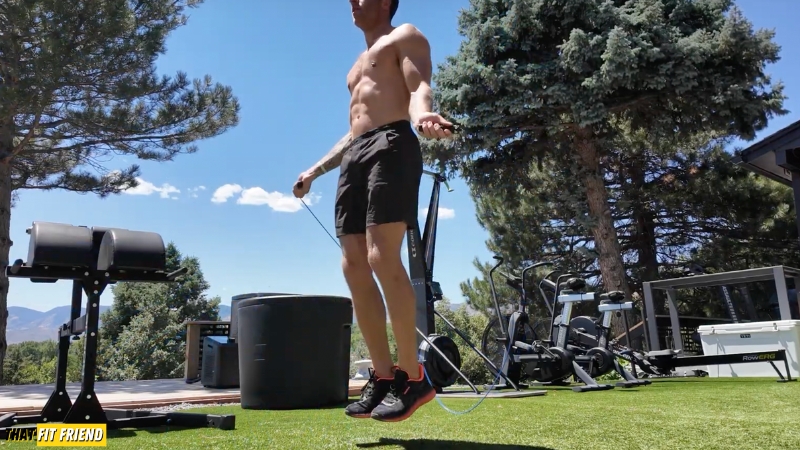
What to Buy for Women | Nike Free Metcon 6
For women, I lean on my training network and my girlfriends in the gym to test models and give me feedback. This helps to cross-reference their feedback with my perceptions of models to see if they’re similar or different.
Specs Worth Knothing
- Price: $120
- Heel-to-Toe Drop: 5mm (allegedly)
- Weight: 11.55 oz (.36 kg/.8 lb for my size 10)
- Removable Insole: Yes
How These Size and Feel
- Width: Medium/Wide(ish)
- Narrower Feet Sizing: True to Size
- Wider Feet Sizing: True to Size, 3E+ Width Pass On These
- Flatter Feet Sizing: These have some arch to them. Flat feet may want to pass.
- Relative Sizing: Go same size as Adidas and Reebok.
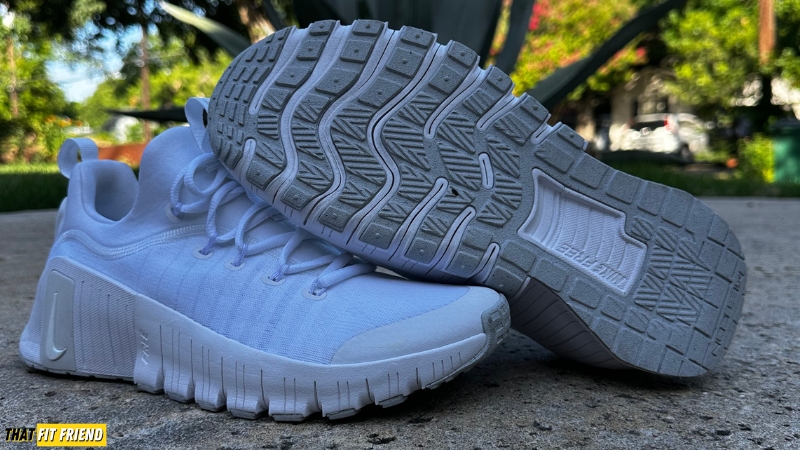
Fave Types of HIIT Workouts In These
- General Classes (think Equinox, F45, Zumba)
- Athletic-Style Sessions
- Sessions Where I’m Jumping A Lot/Jumping Rope
My Full Review and Fave Alternative
- For More Info: Read My Review
- Good Alternative: On Cloud X 4 (if you want more width)
- Nike’s Return Policy: Learn more here.
These Give OG Free Metcon Vibes
The Nike Free Metcon 6 is kind of what I call the fail-safe do-it-all for anyone who’s unsure about which training shoe they should grab for their gym workouts, and more specifically, HIIT and class workouts.
This model’s Nike Free midsole gives them a highly flexible and responsive feel, which is great for exercises like jump rope, skater strides, and tuck jumps. Compared to the Free Metcon 4 and 5, I find the 6 to feel a little more plush and “bouncy” for these activities.
The upper in this shoe also does a good job of locking down the foot when doing explosive work and when lifting. I haven’t had any glaring spillover issues with this shoe’s mesh and textile upper, and the booty-style build also gives the ankle decent support.
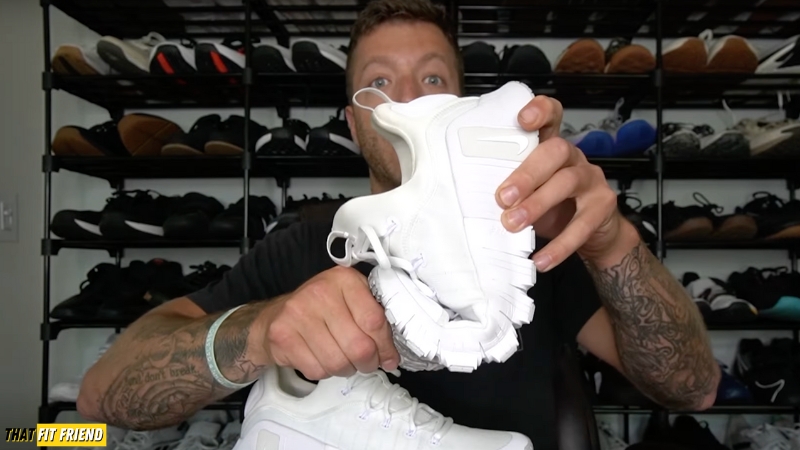
I also appreciate that you can lift in these, too, and my friends have reported that they feel plenty stable when sprinkling in strength sessions with their HIIT workouts each week. For context, I don’t think you’ll notice any glaring compression issues until you pass 365 lbs — so most will be fine with these.
The one concern that I’ve experienced with the 6 is a durability issue that I had on my first pair. When doing heavy sled pushes on turf, I started to have my midsole split at the base of the forefoot. I think the pressure between my foot, the rubber outsole, and the tackiness of the turf caused this issue.
I’ve spoken extensively about this in my reviews, but I wouldn’t fret too much about this unless you’re super into sled workouts. I haven’t been able to replicate it as easily, and unless you’re pushing 5-6 plates on turf often, then these should be fine regarding durability.
What to Buy for Men | Reebok Nano X5
When gauging HIIT shoes for guys, I like to try to take a big-picture approach to assess shoes for HIIT. I’ll look at a shoe’s performance for workouts that include strength training, explosive exercises, agility work, and how they fit men’s feet. Please note that women can also rock the Nano X4, and this section is limited to only the dudes.
Specs Worth Knowing
- Price: $140-150
- Heel-to-Toe Drop: 7mm
- Stack Height: 20mm Heel/13mm Forefoot
- Weight: 13.1 oz (.36 kg/.8 lb for my size 10)
- Removable Insole: Yes
How These Size and Feel
- Width: Medium
- Narrower Feet Sizing: True to Size
- Wider Feet Sizing: True to Size, 3E+ width feet pass on these.
- Flatter Feet Sizing: These have some arch to them. Flat feet may want to pass.
- Relative Sizing: Go the same size as Puma, Nike, and Adidas.
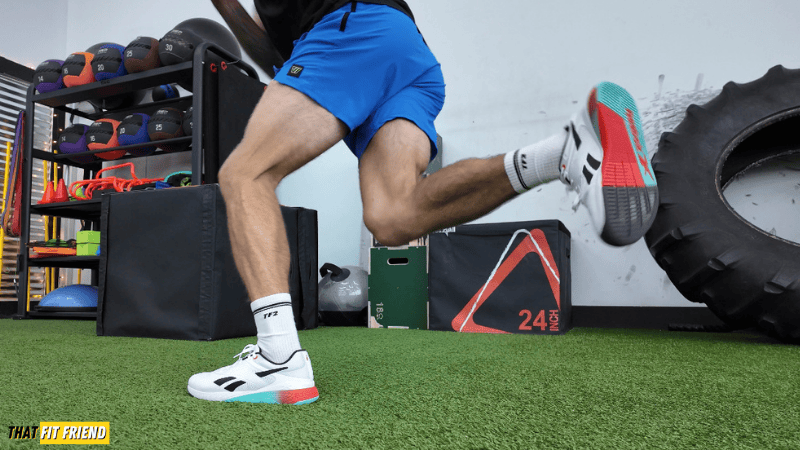
Fave Types of HIIT Workouts In These
- CrossFit-Style Classes
- F45 Workouts
- General HIIT/Plyos (think athletic workouts)
My Full Review and Fave Alternative
- For More Info: Read My Review
- Good Alternative: RAD ONE
- Reebok’s Return Policy: Learn more here.
Great for Strength and Can Work for HIIT
There’s a lot to like with the Reebok Nano X5 in the context of HIIT workouts, but it also does a bit of everything. Like the NFM 6s above, these can also be that good “do-it-all” style shoe for the generalist who wants a trainer for tackling a wide range of tasks.
For HIIT specifically, there are three things that I like with the Nano X5. The first revolves around the midsole and its ability to handle pretty much everything. This shoe’s Floatride Energy Foam midsole walks a good line between being responsive/reactive and stable.
I’ve deadlifted 495 lbs in my shoe and have used them for long jump rope and burpee-focused conditioning sessions. The athletic vibe and fit of this shoe gives them a nice edge for multi-directional work and plyos where you’re really digging into the forefoot trying to be explosive.
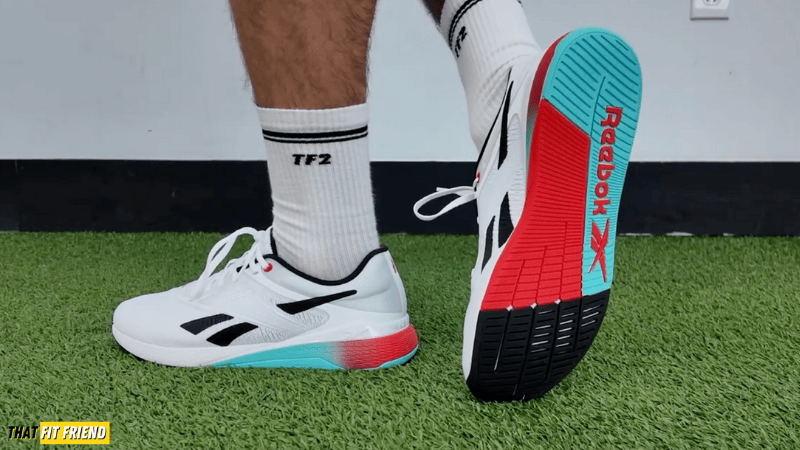
The second reason why I like this model for HIIT is its upper construction. Security is never an issue with this model’s Flexweave upper, and if you’re doing a lot of side-to-side exercises or agility work, this shoe should lock your foot down well. The LAR also provides decent ankle support.
The outsole grip is the final reason why I like this shoe. This model has good traction and grip on a wide range of surfaces, so if I’m sprinting around on turf, doing explosive work on rubber gym floors, or lifting on wooden platforms, this shoe grips and bites well.
What to Buy for Classes | On CloudPulse
Before you read on, please note that EVERY shoe in this list can work fine for classes. For class-focused HIIT shoes, I’m assessing how a shoe does for particular exercises that you regularly see in classes. I assess if the shoe works for lateral work, explosive lunges, air squats, mountain climbers, and this goes on.
Specs Worth Knowing
- Price: $150
- Heel-to-Toe Drop: 8mm
- Stack Height: N/A
- Weight: 11.7 oz (or my size 10)
- Removable Insole: Yes
How These Size and Feel
- Width: Medium
- Narrower Feet Sizing: True to Size
- Wider Feet Sizing: True to Size, 4E+ width feet pass on these.
- Flatter Feet Sizing: These have some arch to them. Flat feet may want to pass.
- Relative Sizing: Go the same size as Puma, Reebok, and Adidas.
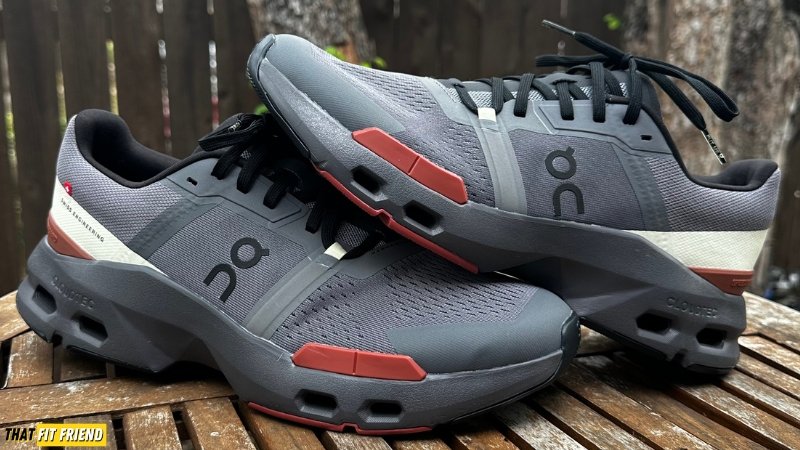
Fave Types of HIIT Workouts In These
- Workouts With A Lot of Jumping
- Classes Where You’re Doing Interval Runs, Too
- Athletic-Style Sessions
My Full Review and Fave Alternative
- For More Info: Read My Review
- Good Alternative: Adidas Rapidmove ADV 2
- Nike’s Return Policy: Learn more here.
Bouncy With Some Stability
The CloudPulse is an awesome model for classes that have a nice “inclusive” construction to them. By that, I mean that most could wear this shoe for classes and be plenty fine in them with their sizing and performance.
The reason why I love this shoe for classes revolves around three construction features. This shoe’s Cloudtec midsole has a nice wider platform and it delivers a healthy blend of bounce and stability for most class-style workouts. You can run, jump, and lift with ease in this model.
The second feature to like is the outsole and its grip. For jump rope, tuck jumps, and exercises like skater strides, I think you’ll appreciate this feature. The full rubber outsole is also an aspect to like about this shoe. This provides this shoe with a nice grip on different surfaces which is great for every type of workout class.
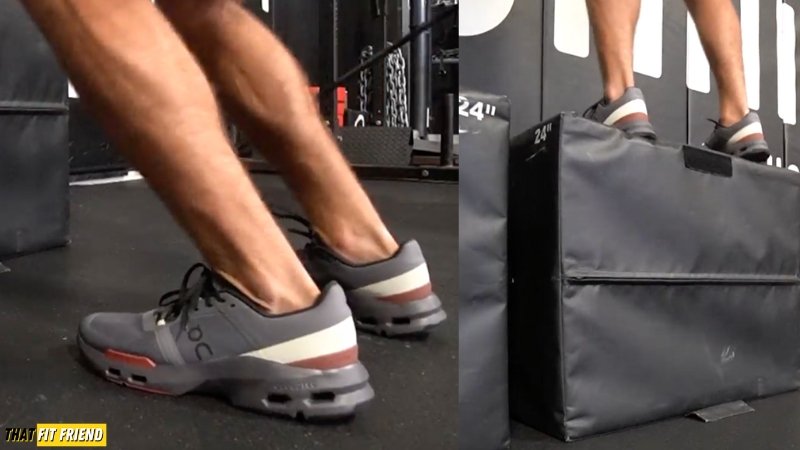
Whether I’m pushing sled on turf or doing agility work on rubber gym floors, this model’s rubber outsole with its light lugs does a good job. It’s also good for protecting this shoe’s midsole from outdoor durability issues.
The final feature to like is the upper regarding its security. This shoe isn’t the most breathable regarding its materials, but when it comes to security, I think the upper really excels. I don’t have spillover issues in this model due to its wider platform, for example.
What to Buy for Wide Feet | Altra Solstice XT 3
When testing HIIT shoes for wide feet, I’m concerned about two primary shoe details. First, is the shoe wide enough for those who fall into the “wide” classification? Second, does the shoe have ample toe box room, and are they comfortable? Measurements matter for wide trainers.
Specs Worth Knowing
- Price: $130
- Heel-to-Toe Drop: 0mm
- Stack Height: 23mm
- Weight: 10.15 oz (for my size 10)
- Removable Insole: Yes
How These Size and Feel
- Width: Wide
- Narrower Feet Sizing: True to Size, Narrow feet may not love the space.
- Wider Feet Sizing: True to Size
- Flatter Feet Sizing: Decent option for flat feet.
- Relative Sizing: Go the same size as Nike, Reebok, and Adidas.
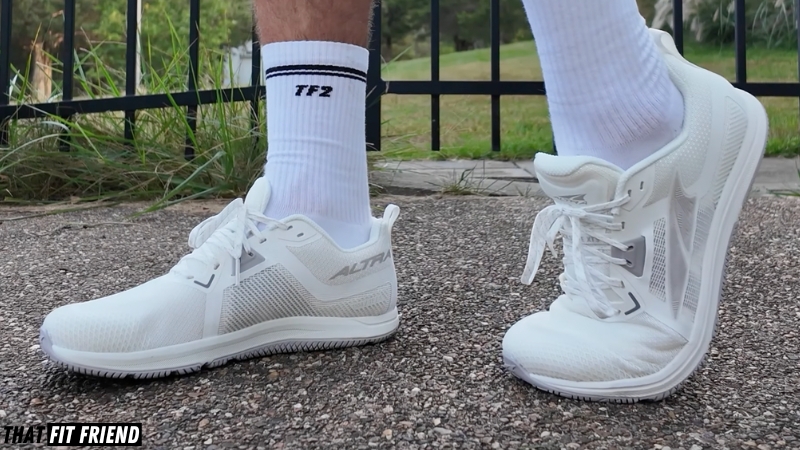
Fave Types of HIIT Workouts In These
- General Classes
- Athletic-Style Workouts
- Workouts With Short Interval Runs
My Full Review and Fave Alternative
- For More Info: Read My Review
- Good Alternative: Topo Athletic ST-5
- Altra’s Return Policy: Learn more here.
My Rationale for Choosing the Solstice XT 3
The Altra Solstice XT 3 is a seriously slept-on training shoe and it’s a fantastic model for those with wider feet. Not to mention, the XT 3 has held up much better than my 2s. Similar to other Altra training and running shoes, this model comes with Altra’s signature Footshape™ build.
This feature is an Altra staple in some of their shoes and it’s essentially their last construction that is designed to replicate the human foot. The toe box doesn’t have a sharp taper and has a much wider width than other training shoes.
Additionally, this model features Altra’s Balanced Cushioning and Innerflex grooves which are both features designed to promote a more “natural” foot positioning and movement.

The high-abrasion midsole in this model is reactive enough for plyometrics and stable enough to support squats up to 315 lbs. This model has been one of my go-to’s when I want a HIIT-focused shoe that has more toe box width than my other models.
I do have one concern with this shoe’s long-term durability if you’re training outdoors. The outsole can be a little prone to ripping, and if you want a wide-toe box trainer for outdoor workouts, then you may want to consider the Inov8 F Fly.
What to Buy for HIIT & High Arches | Adidas Rapidmove ADV 2
If you have higher arches, then you’re going to likely want a shoe that has some natural arch support built-in. This will help this shoe feel better for your foot anatomy and not leave your feet feeling beat up after every single HIIT workout. Blending arch support with a bouncy midsole is the way of this section.
- Price: $120
- Heel-to-Toe Drop: N/A (feels like 5-8mm, though)
- Stack Height: N/A
- Weight: 12 oz (for my size 10)
- Removable Insole: Yes
How These Size and Feel
- Width: Medium
- Narrower Feet Sizing: True to Size
- Wider Feet Sizing: True to Size, but 2E+ width feet may want to pass.
- Flatter Feet Sizing: These have some arch to them. Flat feet may want to pass.
- Relative Sizing: Go the same size as Nike, Reebok, and Under Armour.

Fave Types of HIIT Workouts In These
- Classes With A Lot of Jumping
- Workouts With Short Runs
- General Classes Like Zumba and F45
My Full Review and Fave Alternative
- For More Info: Read My Review
- Good Alternative: Nike Free Metcon 6
- PUMA’s Return Policy: Learn more here.
Wicked Bouncy With Good Arch Support
The Rapidmove ADV 2 is a really strong contender for HIIT workouts when you need a little arch support. This shoe’s midfoot provides a light arch support, and they felt good for my “normal” and should work well for high arches, too.
I think the big thing to love with this shoe is the Lightstrike PRO midsole. This material has A LOT of responsiveness, and if you’re primarily jumping and doing plyometrics, you’ll love how this midsole interacts with the ground. I also like the torsion system through the midfoot for both balance and arch support.
There’s also a good amount of upper security that wraps up on the lateral and medial forefoot, which is great for giving you additional lateral support. That’s why I recommend this shoe for classes and anyone who likes to train more “athletically,” AKA side to side.
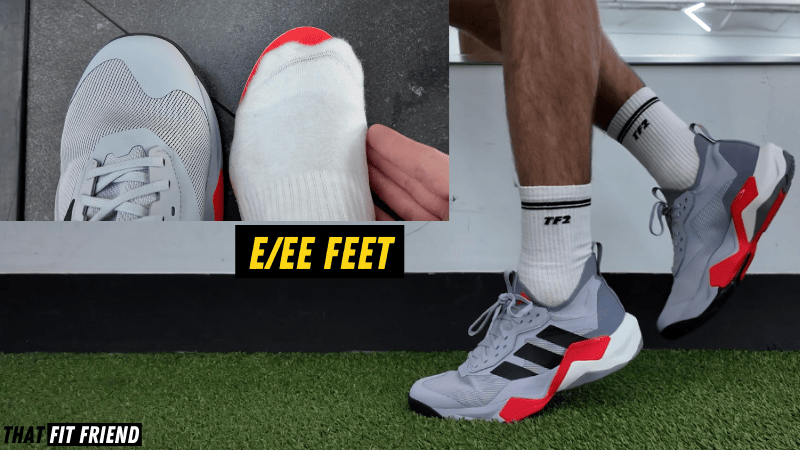
The Continental rubber outsole and its traction do a good job on different surfaces, too. Whether I was pulling or pushing sleds or doing kettlebell flows on turf, this shoe locked my feet down and provided a good bite for my various conditioning demands.
While this shoe works great for HIIT and higher arches, it will fall short for lifting. If you’re after a model for HIIT with some arch support that can also hold its own for stability, then you’ll want to explore options like the Free Metcon 6 or Inov8 F-Lite which is featured below.
What to Buy for HIIT and Weight Training | Inov8 F-Lite
To test shoes for HIIT and weight training, I’m splitting my sessions between high-intensity workouts and more recreational lifting. The F-Lite does a great job at toeing the line between being stable enough for heavy lifting and bouncy enough for HIIT — and the fit wider!
Specs Worth Knowing
- Price: $140
- Heel-to-Toe Drop: 4mm
- Weight: 12.7 oz (.36 kg/.8 lb for my size 10)
- Removable Insole: Yes
How These Size and Feel
- Width: Wide
- Narrower Feet Sizing: Go up a half-size
- Wider Feet Sizing: Go up a half-size
- Flatter Feet Sizing: These have some arch to them.
- Relative Sizing: Go a half-size up from you Adidas, Puma, and Reebok sizes.
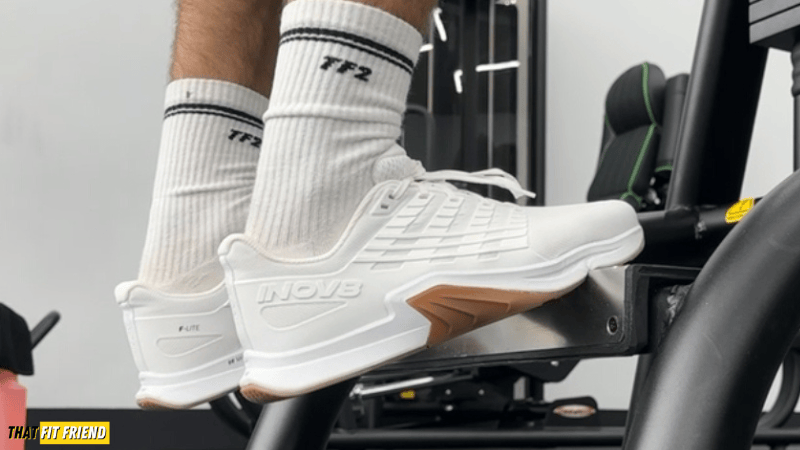
Fave Types of HIIT Workouts In These
- Athletic Sessions Where You’re Lifting, Too
- Classes Where It’s Mostly Lifting
- CrossFit-Style Classes
My Full Review and Fave Alternative
- For More Info: Read My Review
- Good Alternative: RAD ONE V2
- Nike’s Return Policy: Learn more here.
Why I Chose the F-Lite for HIIT and Weight Training
The F-Lite is an underappreciated training shoe. I feel like Inov8 is one of those brands that’s super consistent and you don’t realize it until you eventually give them a try. The F-Lite is their latest “do-it-all'” training shoes, I’ve loved them.
For general HIIT workouts, the F-Lite works well and has a responsive forefoot construction with its PowerFlow midsole. This gives it a nice bounce for things like jump rope, skater strides, tuck jumps, and box jumps.
I also like that you can lift heavy in the F-Lite and use them for CrossFit and functional fitness. If you’re someone who likes to blend HIIT training in with your strength and power training every week, then this model can be a solid bet. The Met-Cradle around the midfoot provides a nice lock-down for this style of training.
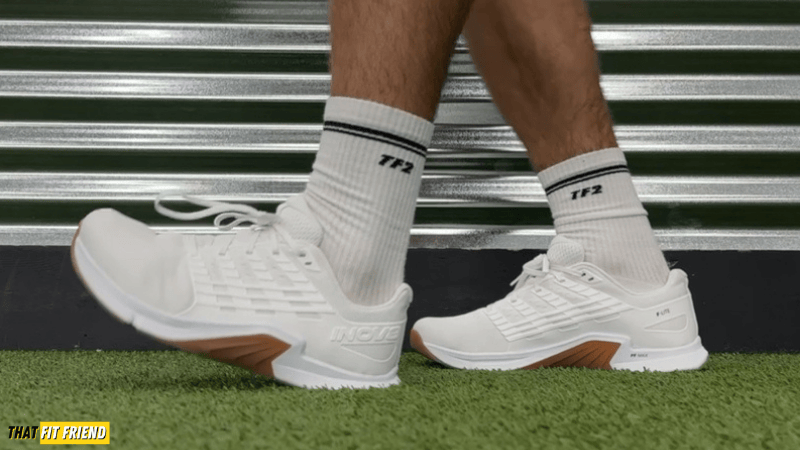
The F-Lite also has a wide forefoot with decent upper volume making them a great option for wider feet. They’re a good alternative to the Altra above for my friends who want to train heavier with wide feet. The extra forefoot room is great for toe splay and a wider range of foot anatomies that it will work with.
The outsole also does a good job with grip with in this shoe, which is a non-negotiable for lfiting and HIIT. If you do decide to try the F-Lite and you’re nervous about sizing, go through That Fit Friend Shop and I’ll cover your returns. !
What to Buy for HIIT and Runs | On Cloud X 4
If you’re looking for a shoe for tackling HIIT workouts and running every week, then you’ll want a shoe with a nice blend of responsiveness and stability. Not many shoes can walk this fine line well, but there are a few out there that can work. If you’re not super worried about HIIT and you care more about pure running/lifting performance, then you’ll want to check out my hybrid list.
Specs Worth Knowing
- Price: $149.99
- Heel-to-Toe Drop: 7mm
- Weight: 11.15 oz (.36 kg/.8 lb for my size 10)
- Removable Insole: Yes
How These Size and Feel
- Width: Medium/Wide(ish)
- Narrower Feet Sizing: True to Size
- Wider Feet Sizing: True to Size, 3E+ Width Pass On These
- Flatter Feet Sizing: These have some arch to them. Flat feet may want to pass.
- Relative Sizing: Go same size as Nike, Adidas, and Reebok.
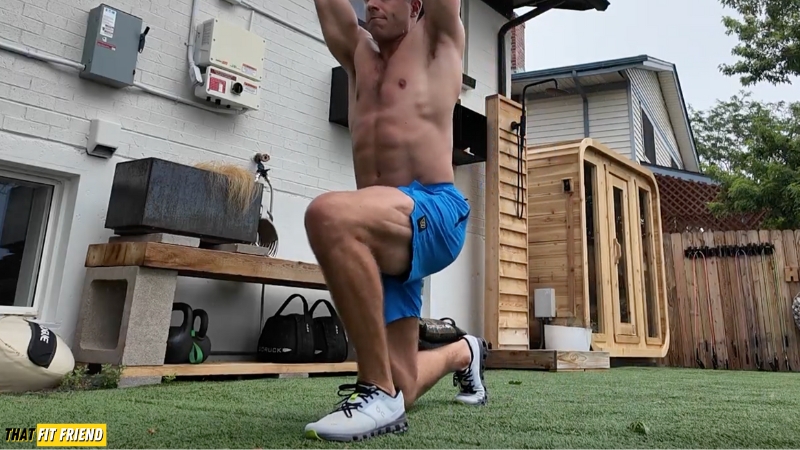
Fave Types of HIIT Workouts In These
- Classes Where You’re Running Often
- HIIT Sessions Where You’re Jumping A Lot
- General Workouts That Blend Everything Together
My Full Review and Fave Alternative
- For More Info: Read My Review
- Good Alternative: Inov8 F Fly (if you want more width)
- On’s Return Policy: Read more here.
You Can Do HIIT and Run a Few Miles In These
The On Cloud X 4 still has a lot of the core DNA of its predecessor, but it does have a few quality-of-life updates to note. For starters, the SpeedBoard tech in this shoe feels better and a little more versatile.
This feature, blended with the CloudTec midsole, makes this shoe feel responsive for workouts where you’re tackling some strength work and than hitting some short interval runs. My favorite workouts yet in these have been my kettlebell sessions with 800-meter runs.
I also like that On reworked the upper and boot in this shoe. The boot now has more padding, so it won’t feel as “harsh” as the more rigid X 3 did, and the tongue’s additional padding makes them way more comfortable for all-day wear.
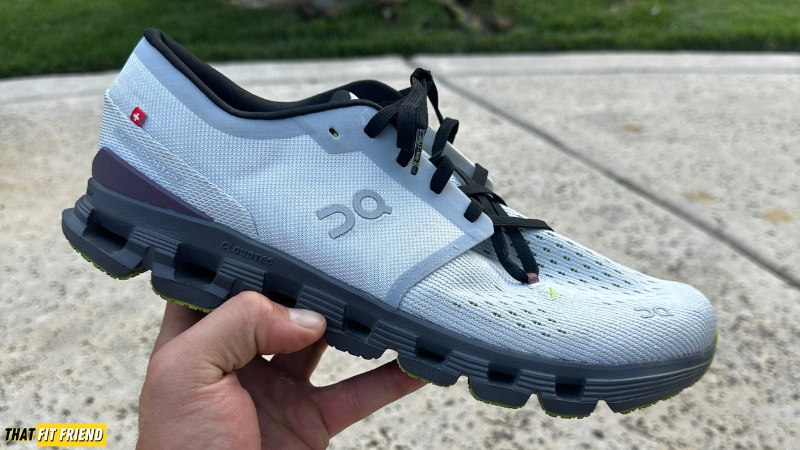
I think the X 4 also makes sense for the individual that wants that single shoe for walking and traveling too. I always explain this shoe as being my go-to for hitting a mile or two, tackling a hotel gym workout, and then walking around as a tourist in a new or familiar city.
My gripes with this shoe revolve around its lateral upper security. It could be better across the board, and if you’re doing a lot of aggressive cutting work and want to stick with On shoes, look into the On CloudPulse.
What to Buy On a Budget | Nike MC Trainer 3
When testing and considering budget HIIT shoes, I consider one key aspect, and that’s price. For “budget-friendly,” I consider shoes that cost $100 and below. My ask is, is the price point fair for the shoes, and do they perform well for HIIT training sessions?
Specs Worth Knowing
- Price: $80
- Heel-to-Toe Drop: 4mm (feels like 4mm)
- Weight: 10.15 oz (.36 kg/.8 lb for my size 10)
- Removable Insole: No, held in with light adhesive
How These Size and Feel
- Width: Medium/Wide(ish)
- Narrower Feet Sizing: True to Size
- Wider Feet Sizing: True to Size, 2E+ width feet pass on them
- Flatter Feet Sizing: These have some arch to them.
- Relative Sizing: Go with your normal Adidas, Puma, and Reebok sizes.
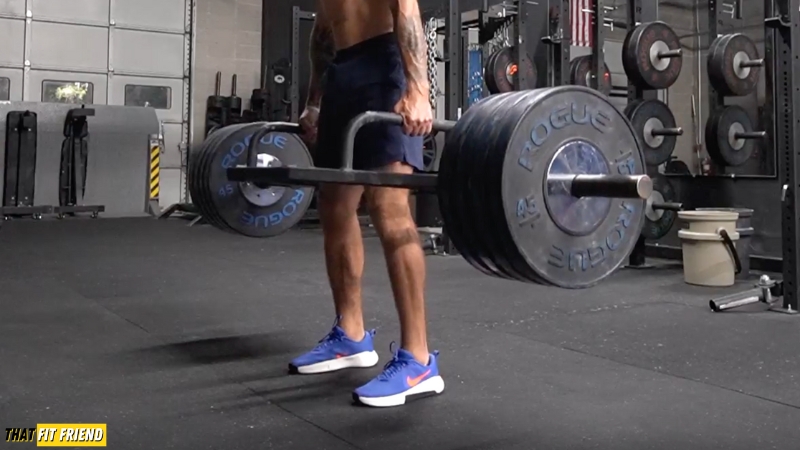
Fave Types of HIIT Workouts In These
- Workouts Where You’re Also Lifting
- HIIT Sessions and Classes That Blend Everything Together
- Athletic-Style Workouts
My Full Review and Fave Alternative
- Watch: My Review
- Good Alternative: Reebok Nano Gym
- Nike’s Return Policy: Learn more here.
A Much Better Iteration for This Line
The MC Trainer 3 is finally delivering when it comes to being a budget-friendly contender for HIIT workouts. Don’t get me wrong, the MC Trainer 2 was okay, but…just okay at that. Its heel and narrow fit really limited it for versatile workouts.
This model costs around $80 and gives you everything you’d want in a shoe that can work for various HIIT workouts. I like the EVA midsole in this shoe and how Nike reworked it slightly to be a little more pliable and responsive.
The MC 2 ran a little dense, which gave it a stability bias, but it didn’t feel the best for athletic and HIIT-focused sessions. For my conditioning work, which often entails sleds, kettlebells, and jump rope, the MC 3 has felt great.
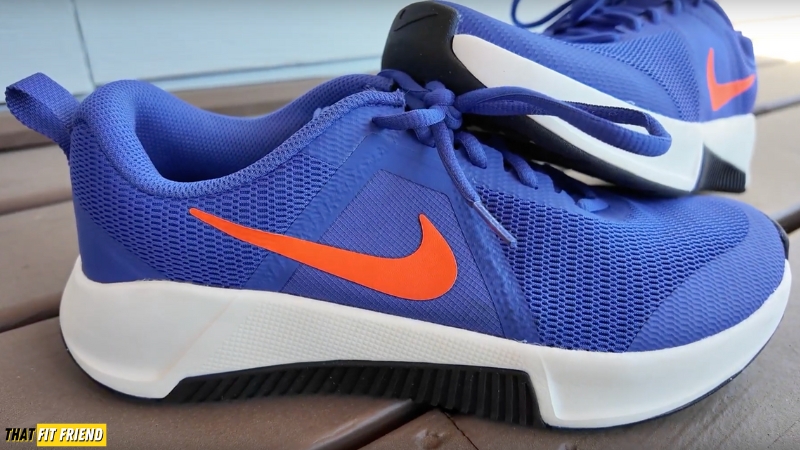
The heel has also been brought in in this shoe, as in it no longer juts out, and this tweak has made this shoe WAY better for HIIT workouts where you’re also doing short runs. I also like that Nike increased the upper forefoot volume and width in this shoe.
I think if you’re trying to spend less than $100 for a shoe that you can lift and do HIIT in, the MC 3 can be worth it. Another worthy contender for this vertical that has a lifting bias is the Reebok Nanoflex TR 2.
Buying Tips That I Use
Tip 1: Midsole Responsiveness Is Key
When assessing HIIT shoes I’m primarily concerned with a shoe’s midsole responsiveness as this can influence overall comfort for jumping, running, and lifting, and a shoe’s upper because this influences security for multi-directional exercises and breathability.
If you do a lot of jumping in your HIIT workouts, then you’ll want to explore HIIT shoes with plusher and bouncier midsoles. For those who strength train and do HIIT, you’ll want a denser midsole with more stability.
Tip 2: Good Outsole Traction Is a Must
As you get more serious with your HIIT workouts you’ll want to keep notes of what shoes work best for your training style. For example, if you primarily do HIIT and jump a lot on wooden floors, then you’ll want shoes with more plush midsole and grippy outsoles.
Every HIIT shoe in this list has been hand-tested and vetted by me over multiple workouts. If you feel overwhelmed by how many shoes there are for HIIT, please reach out and let me know how you train and what you currently wear!
Can You Do HIIT In Running Shoes?
Coach Jake’s Advice: You can use running shoes for HIIT workouts, but I’d suggest paying attention to two key things. First, the types of HIIT workouts you’re going to be doing. Second, the type of running shoe you’ll be using.
Some running shoes will perform better than others in the context of HIIT training. Concerning the first point, if your HIIT workout includes things like bodyweight exercises and very light lifting, then you can get away with a wider range of running shoes.
Since running shoes vary a lot regarding their sole construction some shoes will naturally be better than others for HIIT workouts.

When a HIIT workout is a bit more casual in nature or it only includes body weight and very light exercises, then even thicker running shoes with rounded soles can technically work.
They may not provide you with the most stability or assist with balance, but if your HIIT workout isn’t too demanding, then you can get away with using them.
When talking about the second point, some running shoes will perform better than others based on their sole construction, the materials used in their midsoles, and how their outsoles are built.
For example, two Adidas running shoes, the Ultraboost 22 and the Adizero Boston 10, have drastically different sole constructions.

The Adidas Ultraboost 22 has a slightly more traditional sole while the Adizero Boston 10 has a fairly large midsole and a pronounced lip on the heel to promote smooth strides.
This lip and thick midsole will make the Adizero Boston 10 less of a strong performer than the Ultraboost 22 due to the lack of stability they’ll have for different exercises.
That said, if you’re doing HIIT in running shoes, then I’d suggest trying to use pairs that have a bit more rubber tread on their outsole and midsoles that are thinner or moderately thick for stability and responsive reasons.
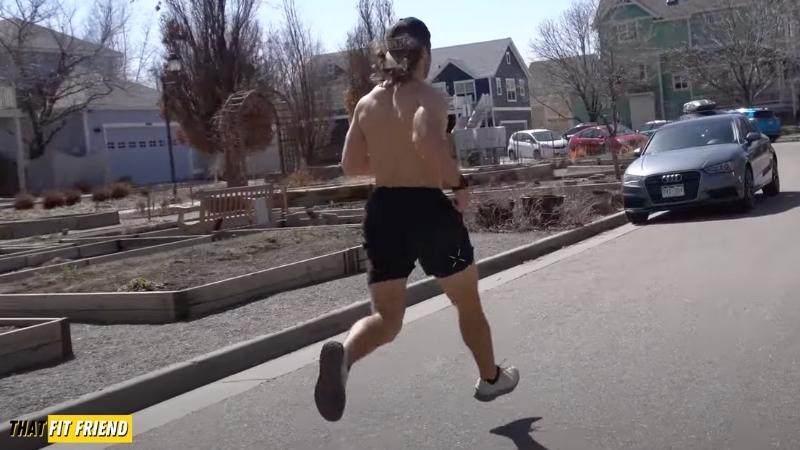
My advice for anyone thinking about using running shoes for HIIT is to invest in a good pair of HIIT-focused training shoes. It’s like playing basketball with a pair of running shoes.
Will they work? Technically, yeah, but they’re not the best tool for optimizing your HIIT workout performance. A good pair of HIIT shoes will be better tools for getting the job done and if you limit their wear to only your HIIT workouts and classes.
How Should HIIT Shoes Fit?
I like to suggest sizing HIIT shoes similarly to cross-training and CrossFit shoes. That being said, opt for shoes that have anywhere from .2″-.6″ of space at the end of the toe box. This will usually be a good range for most athletes, lifters, and others interested in HIIT workouts.
Ideally, you want enough room in the toe box to not jam your toes when jumping, cutting, and doing other ballistic exercises, but not too much room to where you’re sliding around and your heel is popping out, leading to heel slip.

Everyone’s preferred HIIT shoe size will be slightly different and this is due to personal preferences and the vast differences between everyone’s foot anatomy. However, if you work within the suggested sizing range above, then you should be well on your way to finding HIIT shoes that fit well.
What Shoes Should You Wear for HIIT Workouts?
Shoes that are great for HIIT workouts fall under the cross-training shoe category. Cross-training shoes are a style of shoe constructed to handle a wide variety of training tasks and needs.
This means that cross-training shoes will have construction features designed to promote versatility, stability, durability, and responsiveness.
If we look at the different types of cross-training shoes and the construction that comes along with them, then we can start to pick out and filter which models will be best for tackling HIIT workouts.

This is why in my cross-training shoes reviews I always include a “versatile training” section because cross-training shoes can all technically work for HIIT training, but not every shoe is created equal with their construction.
For example, you wouldn’t want something like a Nike Metcon 6 purely for HIIT training because that model’s stability would likely get uncomfortable over time.
That being said, I define shoes for HIIT as a sub-category of training shoes that fall under the cross-training shoe umbrella.
These are shoes that are versatile and walk a fine line between versatility and stability. I then identify which shoes have the best features and construction for assisting with HIIT workouts, classes, and training.
What to Look for In Shoes for HIIT Workouts
If you’re in the market for HIIT-focused shoes, then there are a few key construction characteristics to explore when looking into various models. Every company will design its more HIIT-focused shoes with different technologies and materials, however, there are some commonalities across the board to keep in mind.
Below are three construction aspects that every great HIIT shoe should have.
- Responsive Midsole
- Breathable Upper
- Outsole With Good Traction
If you’re completely lost about what to look for in your shoes, if you use these three construction characteristics below, then I’m confident you’ll be in a pretty good spot.
1. Responsive Midsole
Shoes with a responsive midsole are a must for tackling HIIT workouts. If you’re doing HIIT training with a super stable training shoe, then you’ll likely find them uncomfortable over time especially if you’re tackling longer sessions with a lot of plyometrics. Every company’s HIIT-focused shoes will use different technologies to provide their shoe’s midsole with responsiveness.

For example and to provide some context here as to what these materials will read as for certain companies. Reebok uses a foam they call Floatride Energy Foam, Nike has Nike React Foam, and Under Armour has their HOVR midsole technology.
All of these midsoles are essentially each company’s take on providing a foam construction in their shoes to provide various levels of responsiveness and stability.
What to Look For: Look at the shoe’s midsole and note how the company languages that midsole and its performance. Most shoes will have slightly thicker midsoles and companies will discuss their “reactive” nature when training.
2. Breathable Upper Construction
Another important aspect to explore is the upper construction. Ideally, you’ll want shoes with a breathable upper construction to keep your foot cool when training. Since most HIIT workouts take part in class settings or warm gym settings this aspect can be huge.

Also, more breathable upper constructions typically lead to lighter-weight shoes as well which is also nice to have. Note, that breathable upper constructions are not technically a must, but I prioritize this feature based on this context.
What to Look For: Look for shoes that have mesh and knit uppers or a blend of these materials. Typically, if a shoe uses a mesh or knit upper construction then it’ll breathe fairly well and be lightweight.
3. Outsole With Good Traction
Outsole traction is another aspect to explore. This construction characteristic can be influenced based on where you plan to use your shoes. For most HIIT workouts, you’ll likely be on a wooden gym floor in a class, on rubber mats, or outdoors.

That being said, it’s a good idea to explore what types of outsoles companies use. The last thing you want is to do something like a lateral hop in a HIIT workout and have your shoe slip because there isn’t adequate traction to help promote your balance and stability.
What to Look For: Look for outsoles and shoes that have adequate rubber traction around the forefoot and heel. Some shoes lack this and I’d say steer away from those if you plan on going hard for your HIIT workouts. More rubber will equate to more traction.
How I Test Shoes for HIIT
At That Fit Friend, I have a standard review process in which I put all of the cross-training shoes that I review through. This entails countless training sessions where I’m using the shoes for a variety of different activities.
For HIIT testing, I’ll put together class-like workouts, plyometric sessions, and high-intensity full-body training sessions. This helps paint a really good idea of how the shoes perform in different contexts.
What I Look for When Reviewing HIIT Shoes
During these workouts when assessing a shoe’s ability to perform in HIIT settings, I’m focused on three primary construction features with the following questions.
- Outsole Traction: Is the shoe good for multi-directional activity? Does it provide adequate grip on different surfaces? Does the outsole help with propulsion in any direction?
- Midsole Responsiveness: Is the midsole accommodating for jumping, lifting, bodyweight training, and running? Does it provide enough stability to promote balance but enough versatility to not leave you feeling beat up after sessions? Is it comfortable?
- Upper Construction Performance: Does it breathe well? Is it comfortable? Does it break in relatively easily? Is there ripping or durability concern to have with HIIT training?
All of these questions and features are points of discussion during my HIIT shoe review process. This helps shape how I see certain models and how I rank them compared to one another.
Since I’m the ONLY ONE reviewing cross-training shoes on my site (this does not include running and trail running shoes), I have a really good idea of how certain shoes perform compared to one another. Doing this helps add layers of context to the shoes you find in these lists on That Fit Friend.
Takeaway Thoughts
The right pair of shoes can make a big difference in classes and HIIT workouts. Since these activities are often fast-paced with high-impact exercises, you’ll want a pair of shoes that don’t leave you feeling beat up and sore after workouts.
The options above are all viable HIIT shoes for slightly different reasons and I’ve tested every single model for high-intensity exercise.
If you have any questions about the shoes above or if they’re right for the context of your training needs, drop a comment below or reach out to me personally via Instagram (@jake_boly)!

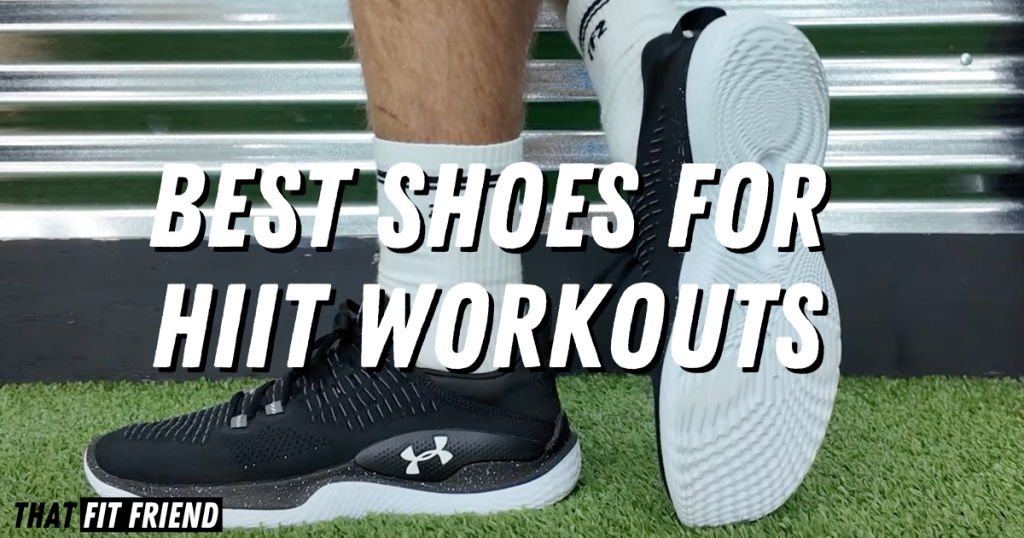
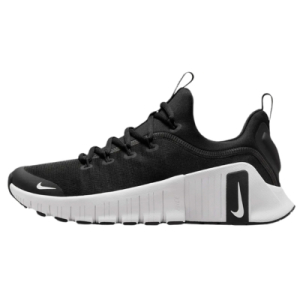
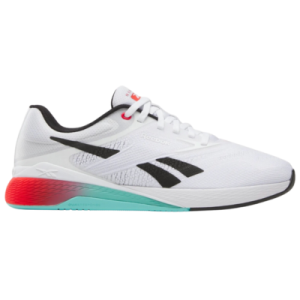
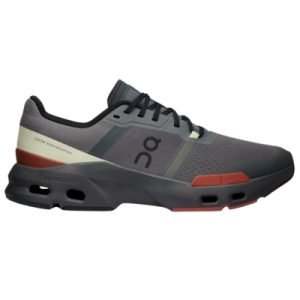
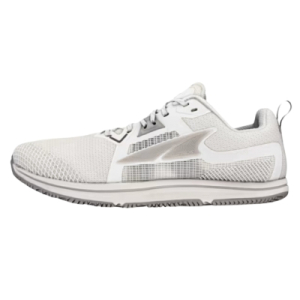

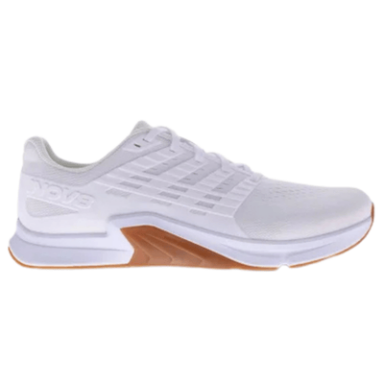
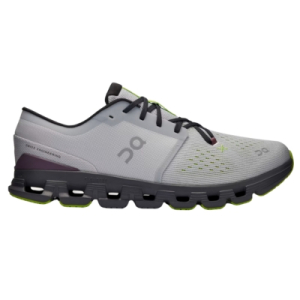
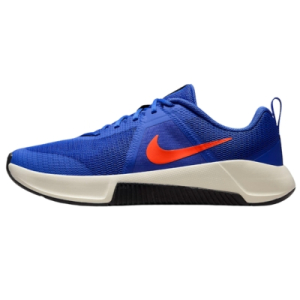


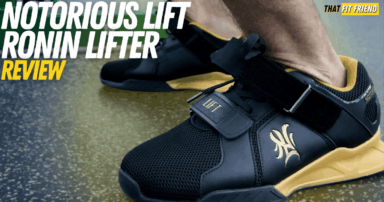


Aris
Greetings, I have acquired an Under Armor Charged Commit TR 3 based on your review and it has been going strong since 2023. The fit is good for my flat and wide feet, it has worked OKish for crosstrain and Hiit but I find it rather heavy and its breathability is not good.
Is there any alternative that has more or less the same fit, retains the same level of flexibility (or better) and is a bit lighter and more breathable?
Try the VIKTOS Core Containment model! I think you’ll enjoy their fit and they have a nice weight/breathability. Go up a half-size in them to ensure you have plenty of toe box room!
Adnan Kidwai
This might be a really dumb question but as a student who plays a little bit of everything (tennis, pickleball, basketball, soccer) and does a little bit of gym (hiit, circuit training, classes, cardio) a bit of running a little bit of hiking and most of these involve varied surfaces sometimes on gym floors, outdoor or indoor courts, grass and turf and everywhere I look I am told for each surface and each sport I need to buy a different shoe and as a kid I thought cross trainers by definition were built for this purpose. I cant afford 20 different types of shoes nor do I have the ability to keep changing shoes every time I decide to get on the grass or court. Is there a shoe I as a recreational sports enthusiast can use and change when worn out rather than own 20 different shoes
Not silly or dumb all at all! Honestly, you might be best suited looking for a well-rounded court shoe. They can work great in the gym and hold their own for a wide range of sports. Cross-trainers can work but for your case specifically with that list of sports, I think a sport-focused shoe would be your best bet. Best of all worlds then and you don’t have to compromise potential durability issues like you may have to if you go cross-trainer.
I’d look into models from New Balance and Adidas!